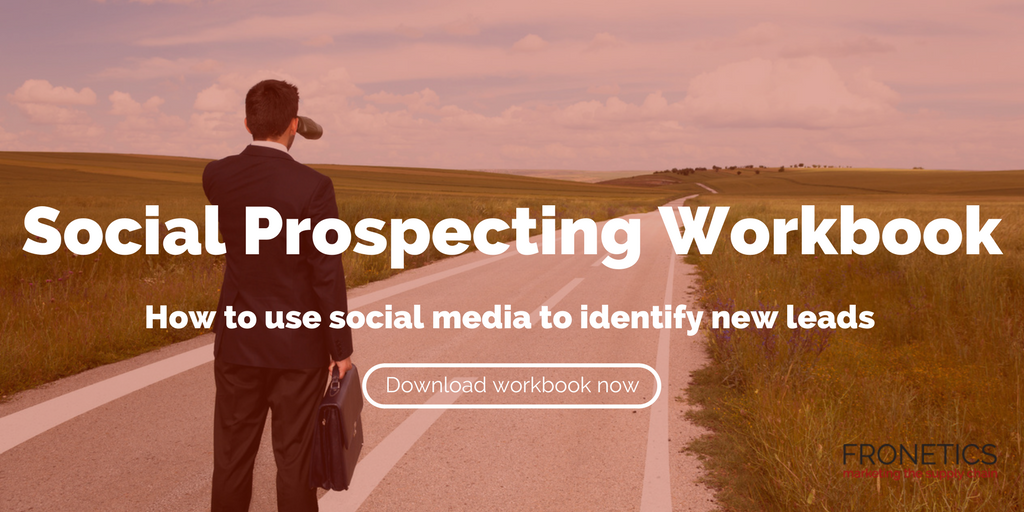
by Fronetics | Aug 29, 2018 | Blog, Content Marketing, Current Events, Marketing, Social Media
Also in social media news August 2018: Twitter releases an ads playbook, Snapchat introduces a private ads marketplace, WhatsApp launches a Business API, and Facebook makes updates to its video metrics.
As kids gear up for back to school, social media platforms are busy making updates with a focus on business pages. Facebook, Twitter, and WhatsApp are all releasing updates and features, including playbooks, to help advertisers increase their brand awareness and user reach. Facebook even created updates to its metrics to help advertisers produce better reporting around usage.
Here’s what’s been happening in August with the hottest social media platforms and how the latest updates are aimed at helping businesses gain exposure and new audiences.
Your social media news for August 2018.
Facebook Q2 earnings show increased user growth but slow revenue growth
Facebook just released their Q2 earnings report showing that the social media giant now has more than 2.5 billion people using at least one of its apps (including WhatsApp, Instagram, and Messenger) monthly. The report also showed declining revenue growth, despite efforts to rebuild trust among users. Mark Zuckerberg reiterated his commitment to user privacy and security. “We continue to invest heavily in safety and security. This quarter, our systems identified and removed thousands of fake accounts, pages, and groups.”
Snapchat drops user count in Q2
Snap Inc. released its Q2 2018 Financial Results revealing a three million daily active user drop in its user base. With a recent redesign to the app, Snap Inc. was aware usage would be down. Co-founder Evan Spiegel states that “the company has been working to improve Snapchat based on user feedback” and is “eager to make more progress on the tremendous opportunity we now have to show more of the right content to the right people.”
Facebook’s Workplace acquires Redkix
Workplace for Facebook, an interactive tool for coworkers, acquired Redkix, an email software that combines email, messaging, and calendar features into one app. Recode reports the acquisition took place so Facebook could create its own communication system within Workplace. Facebook has been working overtime to beef up its Workplace platform to compete against Slack, a messaging app with almost 100 million paid users.
Twitter Business created an ads playbook for businesses and brands
Twitter Business released a Playbook for Agencies, a new document created to answer the most frequently asked questions by businesses about Twitter ads, client strategy, and more. “We compiled the most asked questions from agencies, partnered with our customer service team, and synthesized six months of Twitter research to create this guide which will help agencies guide their clients toward Twitter success,” writes Twitter.
Snapchat creates private ads marketplace
Snapchat is offering more ad tools to “premium publishers and advertisers – offering brands ‘unskippable’ slots and experimenting with a private marketplace (PMP) that lets Discover media partners take greater control over their inventory.” Starting in August, the app will give 100 randomly picked brands the ability to buy ad programming against TV-style content, including a wide variety of programming from scripted drama to comedy.
Facebook updates video metrics
Updates in the past year gave users the ability to rewind and re-watch parts of video ads, leaving advertisers with skewed reporting numbers. Facebook recently updated its video ad metrics to account for re-watched ads, removing any redundancies in reporting. The new metrics will automatically remove any three or ten-second views that are watched after rewinding.
WhatsApp launches Business API
Looking to expand its business tools, WhatsApp launched Business API, allowing medium to large business to manage and send non-promotional messages to customers. These messages include appointment reminders, shipping information, event tickets, and more for a fixed rate. VentureBeat reports all messages sent through the API will be free for the first 24 hours, messages sent after that will be charged. Though currently only available to select businesses, including Uber, Booking.com, and KLM Airlines, Business API will eventually be available to all more customers.
Facebook no longer permits cross-posted tweets
In light of recent Facebook platform and policy updates, users can no longer automatically cross-post their tweets or retweets to Facebook. As of August 1, users will have to copy a tweet’s URL to post a tweet to Facebook.
Related posts:


by Fronetics | Jun 18, 2018 | Blog, Content Marketing, Logistics, Marketing, Strategy, Supply Chain
Looking for blog post ideas? Try using these resources to create topics that are original, relevant, trendy, and — most of all — relevant to your business.
I’ve said it once — ok, way more than once — but I’ll say it again: The more you blog, the more leads you’ll get.
That’s all very well and good, but what happens when you have no idea what to write about?
As usual, the internet is coming to your rescue. Here are four of our favorite online tools to help you generate blog topic ideas.
4 online tools to generate blog post ideas
1) HubSpot’s Blog Ideas Generator
Remember Mad Libs? Give HubSpot three nouns, and its Blog Ideas Generator will give you blog ideas.
While not exactly a Mad Lib, this tool is a great way to focus on topics where you want to cultivate your authority. It’s an excellent way to generate blog post ideas for a topic cluster, in line with existing pillar content.
2) Alltop
Co-created by legendary business advisor and author Guy Kawasaki, Alltop describes its goal as helping you to answer the question “what’s happening” in topics that pertain to your business.
Essentially, it’s a list of recent posts from the most trusted blogs on each topic. Select your topic, and you’ll get posts relating to that topic from the top blog in each industry. It’s gives you a great “in” on the most important conversations going on among thought leaders in the supply chain — and your goal is to become one of them.
3) Ubersuggest
It may not be the best tool for coming up with actual post titles, but Ubersuggest is a great way to generate general topic ideas for new posts. Enter a word or phrase, and Ubersuggest produces a long list of results containing the word or phrase followed by related phrases.
4) Twitter
[bctt tweet=”Yes, you read that right. Twitter can actually be a great way to generate blog post ideas.” username=”Fronetics”]
Try running a Twitter search using your keyword proceeded by a hashtag (#procurement, for example) to get a list of tweets containing your keyword. Twitter also has the bonus of being likely the most up-to-date conversation you can find on the web.
Do you use any tools to generate blog post ideas?
Related posts:


by Fronetics | Apr 30, 2018 | Blog, Content Marketing, Current Events, Marketing, Social Media
Also in social media news April 2018: Instagram shuts down API platform, LinkedIn’s updates aimed at helping B2B marketers, and Facebook expands split ad testing.
Facebook has been busy creating updates focused on user security in the wake of the Cambridge/Analytica scandal. Since the data breach, Facebook CEO Mark Zuckerberg has committed to protecting user’s information and outlined several initiatives in the works to “prevent abuse, protect personal data and privacy, improve security, and take down fake accounts.”
One of the key takeaways from the scandal has been the lack of regulations overseeing business practices, as it applies to user data. It is safe to say that new regulations are looming in the not-so-distant future.
[bctt tweet=”“Computer science is undergoing a ‘reckoning’ and an ‘ethics crisis’ not unlike what has happened in chemistry with dynamite, in physics with nuclear bombs, and in human biology with eugenics.” Yonatan Zunger” username=”Fronetics”]
Google engineer Yonatan Zunger wrote in the Boston Globe, “Computer science is undergoing a ‘reckoning’ and an ‘ethics crisis’ not unlike what has happened in chemistry with dynamite, in physics with nuclear bombs, and in human biology with eugenics.” These regulations could have major impacts for advertisers, who have been capitalizing on data collected by social media platforms. Regulations that limit the tracking and retaining of user data will especially affect target advertising that relies on capturing data from target audience users.
Fronetics is staying on top of these changes and will continue to provide social media recommendations and updates on regulations.
Here’s your social media news for April 2018.
Facebook Changes Include More Transparency Around Ads and Pages
Facebook is working to make important changes that are aimed at increasing transparency and authenticity. “By increasing transparency around ads and Pages on Facebook, we can increase accountability for advertisers — improving our service for everyone,” says Rob Goldman, VP, Ads, and Alex Himel, VP, Local & Pages, in a statement on Facebook’s website.
Last October the social media giant rolled out restrictions on electoral ads on Facebook and Instagram. This April, Facebook is expanding those restrictions to all “issue ads” — for example, political topics — so only authorized advertisers that have been approved by Facebook can run issue ads. These changes are aimed at preventing any additional user data and privacy issues.
Facebook is also enforcing a verification process for all admins managing pages with large numbers of followers. “Those who manage large Pages that do not clear the process will no longer be able to post. This will make it much harder for people to administer a Page using a fake account, which is strictly against our policies.”
YouTube Introduces TrueView Ads
YouTube’s new ad format, TrueView for Reach, is its latest update aimed at boosting engagement for advertisers. The format allows advertisers the ability to build ads from 6 to 30 seconds long, with the skip option available after 5 seconds. “Our six-second bumper ads were designed to drive more reach among the audiences you care about, especially as they become increasingly on-the-go. They showcase not only the fun of storytelling in six seconds, but also the benefits of adapting to consumer behavior,” posts Ali Miller, Product Manager, Video Ads, and Khushbu Rathi, Product Manager, Video Ad for YouTube.
Facebook Improves and Expands Ad Split Testing Capabilities
Last October Facebook gave advertisers the ability to create split tests in Ads Manager’s Guided Creation workflow. The new update this month allows users to create tests in Quick Creation flow, making it even easier to manage ads in bulk and test ads against one another. Quick Creation will also feature a dashboard that shows “standard KPIs for the ads in your split test, such as CPM, CPC, CTR and more, to inform your marketing strategy.”
Instagram Cuts Off Older API Platform
In light of Facebook’s data security issues, Instagram announced it is shutting down the API platform, effective immediately. They have also greatly reduced the amount of data developers can access per hour, dropping from 5,000 calls per hour to only 200. Tech Crunch reports Facebook’s bold action to reform its APIs shows it’s willing to prioritize users above developers — at least once pushed by public backlash and internal strife.
LinkedIn Rolls Out Native Video for Sponsored Content and Company Pages
LinkedIn introduced autoplaying native video ads that will appear in the news feed section as stand-alone posts, as well as the ability to include native video on a company page for businesses and publishers. These changes were developed to help B2B marketers grab the attention of their audiences and increase engagement. “While video is a proven and popular tactic to engage decision-makers, the challenge has been finding a quality environment in which to reach them.” The update will be available to all businesses in the next few weeks.
Twitter Expands its Official Partners Program
Back in 2015, Twitter introduced its Official Partner Program, a select set of companies aimed at helping brands increase their ROI on advertising, brand awareness, and scaling customer care. The program has been so successful, Twitter announced it’s expanding the program to include six new partners: Curalate, Jebbit, VidMob, Vidsy, Animoto, and Social Native. “Each provider offers a unique solution that expands the advertisers’ toolset and delivers high-quality creative for brands on Twitter.”
Related posts:


by Fronetics | Apr 12, 2018 | Blog, Content Marketing, Leadership, Marketing, Social Media, Supply Chain
Make the most of your supply chain leaders’ social media accounts by following these steps.
I’ve written many times before about the importance of supply chain leaders being on social media as the face of their brands. Social media presents a huge opportunity for executives to use their relative industry celebrity to be an extension of their organizations.
So you are ready to commit to a more active social media presence (or you’re going to be ghost-posting for your executive). Where do you begin?
We’ve come up with 4 tips for supply chain leaders to making the most of their presence on social media.
4 tips for supply chain leaders on social media
1) Find the right platform (or platforms) for you.
The first thing to consider is your target audience. If you’re looking to reach a young demographic, for example, Snapchat is probably the way to go, as 45% of its users are under the age of 24. Likewise, if your brand would be well-served by live video (hint: it probably will!), Facebook Live and Instagram Stories offer great possibilities.
Next, think about your personal voice, and what type of content you are likely to be posting. Thought leadership can often best be established on LinkedIn. But that doesn’t mean that Facebook, Twitter, and YouTube aren’t also good avenues to present your voice to the world. Pick the platforms that you feel speak most to your audience and best serve your brand.
2) Use your creative side.
Supply chain and logistics leadership requires a tremendous amount of creativity and innovation. Let these qualities shine through in your social media presence! You have the tools to spark more engagement, increase follower count, and make your posts go viral.
This means using your unique voice to be a storyteller, engage your audience, and create a face for your brand. If you need some inspiration, check out these 7 Twitter accounts.
3) Create space for conversation.
Too many would-be social media mavens fall into the trap of posting the kind of content that doesn’t invite interaction. Instead, be a conversation-starter.
First, take a look at your audience and what kind of interactions they have online. You can scan the pages of other leaders in your niche as a reference point.
You can generate interaction and engagement by showing gratitude, listening to your audience, handling queries, posting thought-provoking content, and posing questions in your posts.
4) Avoid controversy.
This might seem obvious, but there’s a fine line to walk between posting or re-posting thought-provoking content and becoming an inadvertently controversial figure.
Keep in mind that, in the public platforms that are social media, all your moves will be under constant scrutiny from your fans, followers, and people in their networks. This means that while cultivating a personal voice, it’s important to maintain a level of professionalism. And stay away from posting anything that can make you a lightning rod for controversy!
Where do you go to follow supply chain leaders on social media?
Related posts:


by Fronetics | Mar 27, 2018 | Blog, Content Marketing, Current Events, Marketing, Social Media
Also in social media news March 2018: Snapchat allows branded content ads; Facebook is testing Messenger Broadcasts; and Twitter tests prioritizing news tweets.
With the increasing popularity of automation tools and chatbot technology, social media platforms are working to regulate how brands are reaching their target audiences. Trying to ensure that users aren’t being inundated with spam posts or fake news, Twitter, Facebook and many others are coming out with stricter rules and regulations. This could mean extra work for smaller brands trying to keep up with the latest changes to make sure their content is getting as much reach as possible.
But there are real benefits to using automation tools, especially when it comes to social media management. Facebook, for example, is testing a new Messenger Broadcast that would help smaller businesses, which don’t already utilize chatbots, blast messages to users that have started a conversation with their Pages. These small but helpful updates will allow companies to have a greater reach without extra work for their marketers.
Here’s your social media news for March 2018.
Facebook/Cambridge Analytica scandal furthers distrust
Facebook issued yet another apology to its users after news broke that a quiz app developed by a Cambridge University researcher leaked personal data from about 50 million people in 2014. Political consulting firm Cambridge Analytica, which was affiliated with President Donald Trump’s 2016 election campaign, allegedly used the data to create psychological profiles to influence voters. Users responded with a #deleteFacebook campaign, in which those angered by Facebook’s mishandling of the data are encouraging widespread removal of all Facebook-associated apps, including Instagram and WhatsApp. Fronetics is staying on top of this situation and will continue to provide social media recommendations in light of such reports.
Facebook ends Explore Feed
Adam Mosseri, head of Facebook News Feed, announced plans to discontinue the Explore Feed on the website in early March. Facebook introduced Explore Feed in October as, essentially, a second News Feed that acted as a dedicated place for Pages. User feedback showed that “Explore isn’t an effective way for people to discover new content on Facebook,” and actually made it harder for users in test areas to access important information.
Twitter cracks down on automation and bot usage
Twitter released a new set of rules and regulations that prohibits developers from using Twitter automation and bot programs to simultaneously post identical content from multiple accounts. It also bans users from performing actions — such as likes, retweets, or scheduling tweets — from multiple accounts. “One of the most common spam violations we see is the use of multiple accounts and the Twitter developer platform to attempt to artificially amplify or inflate the prominence of certain Tweets,” writes Yoel Roth on Twitter’s blog.
YouTube adds new live-streaming tools and features
YouTube introduced a new chat replay feature that unfolds exactly as it did when the video was streaming live. Users can now watch videos that originally aired live and follow the conversations that took place alongside of the video, even after the live stream is over. This new feature supports YouTube’s mission to add “ways to watch live videos and interact with your community in real time.”
Facebook tests messenger broadcasts
Facebook is testing a new messaging tool directed at small businesses that haven’t jumped on the chatbot bandwagon. TechCrunch reports that Messenger Broadcasts allow companies to blast a message to anyone who has already started a conversation with them in Messenger. The new tool is currently being tested among a small percentage of Pages in the U.S., Mexico, and Thailand. Facebook hopes to turn the messaging tool into a paid product for small businesses and limit the number of messages that can be broadcast to cut down on spam.
Twitter test makes news the first thing users see in the timeline
Twitter recently confirmed a test of a news reel that would put news highlights at the top of users’ feeds. According to BuzzFeed, Twitter will select news items to appear in boxes at the top of the timeline. Twitter says the test is designed to “highlight the platform’s bent towards current happenings” while making news easier to find. This test comes in the aftermath of Facebook also trying to prioritize news events over Pages, while also fighting increasing fake news.
Snapchat allows branded content ads
Snapchat will now allow publishers to share branded content among the articles and videos they post. “Starting now Discover publishers are allowed to distribute branded content within the Snap Ads that run in their Publisher Stories,” a Snapchat spokesman said in an emailed statement. Snapchat Discover generated more than $100 million in ad revenue for its media partners in 2017, and this latest update will hope to boost even more ad sales.
Related posts:









